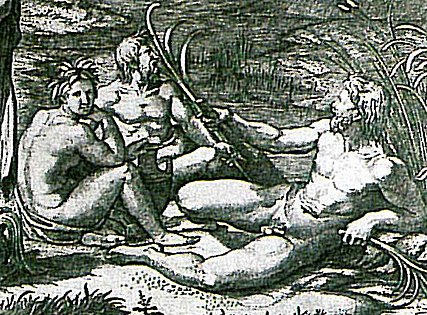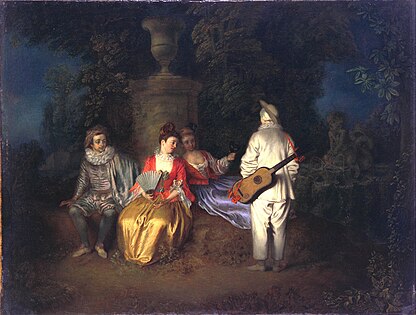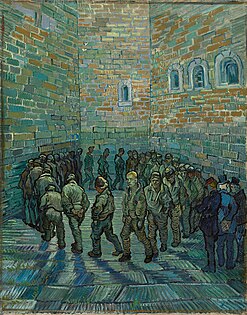Paraphrase (art)
Paraphrase (Greek para = "to", next to and fraseïn = "talk", "say") describes the reworking and implementation of an existing work in the context of a different style area, usually by another artist, possibly in a different century.
Picasso's transpositions after works by other great painters ( Cranach , Rembrandt , Velázquez , Delacroix , Manet , etc.) are usually referred to as paraphrases. But the phenomenon as such is not new. So is the famous The Luncheon on the Grass (Manet) , which Picasso had assumed already a paraphrase by Raphael or Giorgione or Titian .
Occasionally these paraphrases are also called parody called, due at least in the case of Picasso's not correct because he did not want to make fun of the artists whose works he edited, but by honoring the contrary and compete with them. Even Vincent van Gogh is known for numerous paraphrases of works that he admired.
Examples
Some of Picasso's depictions of "Breakfast in the Green" after Manet:
Claude Monet :
Breakfast in the Green (1865)Édouard Manet :
Breakfast in the Green (1863)Marcantonio Raimondi :
The Judgment of Paris (Giudizio di Paride) (around 1515/16) , copper engraving after RaphaelAntoine Watteau :
La Partie CarréeJames Tissot :
La Partie carrée deVincent van Gogh :
The Prisoners' Tour (after Gustave Doré ) (1889)







